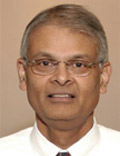Basics of Particle Mechanics for Contamination Control in Cleanrooms
One could argue that the need to control airborne particles as small as nano sizes gave birth to the contamination control industry. Although current practices, especially in microelectronics, have rightly focused on airborne molecular contaminants, efforts to control airborne particles continue to be a significant part of the industry. The mechanisms of particle behavior are the basis for many of the activities related to cleanrooms and contamination control, such as the design of cleanrooms, as well as for activities such as design, manufacture, and testing of high-efficiency air filters, particle monitoring, and cleanroom validation. This course offers a primer on particle behavior in air, such as diffusion, impaction, and particle interaction with light. Methods of characterizing particle size distributions common to the science will be addressed in an attempt to demystify terms such as “mass mean” and “geometric mean.” The objective of the course is to give practitioners an overview of the science behind instruments, products, services, or processes used in measuring and controlling particles in air.
Course outline Who should attend? Course materials Instructor
Course outline
- Reasons for particle contamination control
- Particle mechanics
- The science
- Slip correction
- Settling velocity
- Brownian motion and diffusion
- Light particle interaction
- Refraction
- Light scattering
- Single particle sensing
- Multiple particle sensing
- Charging
- How to characterize aerosols
- Particle measurement
- Particle removal
- Challenges
- Filtration
Who should attend?
I need to gain more information on particle mechanics because:
- I am involved in airborne particle contamination in my cleanroom
- I am a product or process design engineer for cleanrooms and cleanroom products
- I am a certifier or validator
- I am new to the industry
Course materials
- Copy of PowerPoint presentation in a course binder
- Certificate of course attendance with completion of CEUs
Continuing Education Units: .6 CEUs
Instructor

R. Vijayakumar